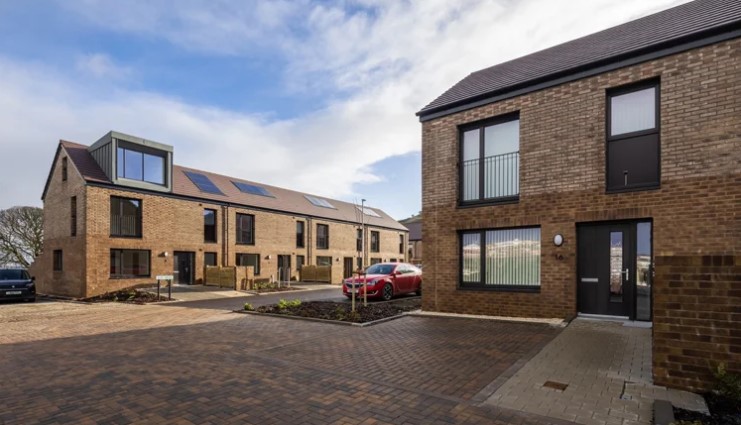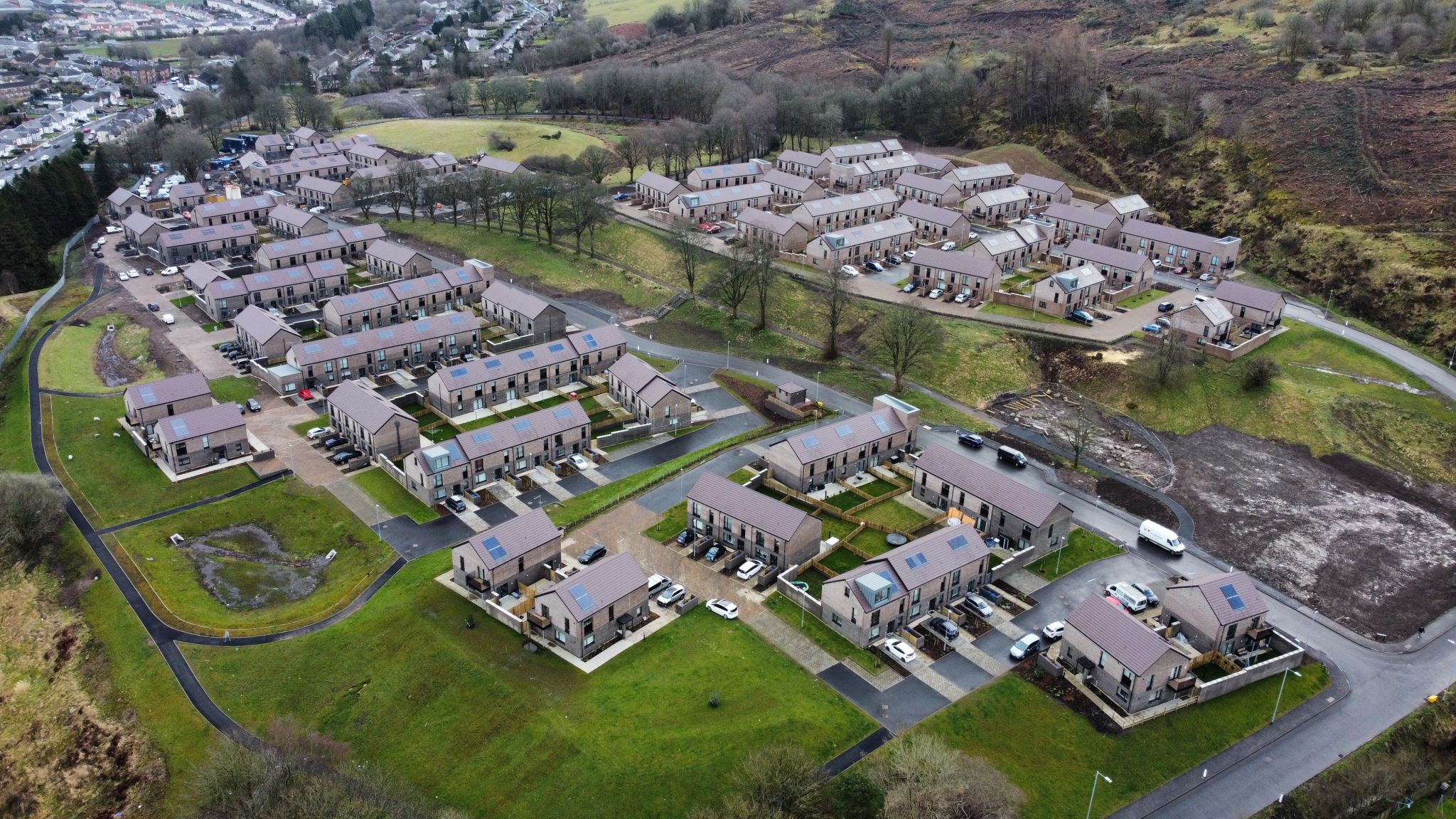Ravenscraig Hospital Site
Greenock
______ The £24 million development of the former Ravenscraig Hospital site in Greenock will provide 198 high-quality, energy efficient homes for Link Group in partnership with Oak Tree Housing Association.

___________Introduction
The first phase will see the delivery of 149 homes for social rent and is designed by Stallan-Brand, including a mix of terraced houses and cottage flats, with up to 10% of the housing built to wheelchair exemplar standard, providing homes suited to specific needs.



___________Introduction
The first phase will see the delivery of 149 homes for social rent and is designed by Stallan-Brand, including a mix of terraced houses and cottage flats, with up to 10% of the housing built to wheelchair exemplar standard, providing homes suited to specific needs.
___________Sustainability
The development is designed to achieve Bronze level under Section 7 (Sustainability) of the 2017 Building Standards. It is also designed to achieve Silver Level Aspect 1 & 2 under Section 7 (Sustainability) in accordance with funding requirements. The project was also required to achieve a 15% carbon emissions abatement using Low and Zero Carbon Generating Technologies (LZCGT).
This will be achieved by using enhanced fabric performance, a mixture of Decentralised Mechanical Extract Ventilation (DMEV) and Centralised Mechanical Extract Ventilation (CMEV) and Photovoltaic Panels (PV).
___________Impact
Carbon Futures worked collaboratively with the design team to develop an efficient energy and sustainability strategy for the development. Our focus was to develop an enhanced fabric strategy through increased levels of insulation to minimise heat loss. Thermal modelling and renewables enabled us to optimise the proposed strategy to achieve Silver level Aspect 1 & 2 under Section 7 (Sustainability) of the 2017 Building Standards.
With insulation proposed to the outside of the timber frame creating deep reveals to openings, we were required to undertake a bespoke thermal modelling exercise to assess the thermal performance of all construction details. This resulted in a significant reduction in the heat loss associated with thermal bridging, enabling us to accurately account for fabric performance, which reduced the reliance on renewables.
Additional services provided by Carbon Futures included Approved Certifier of Design (Energy) certification, Building Regulation Compliance through the provision of SAP Calculations and provision of Energy Performance Certification.


